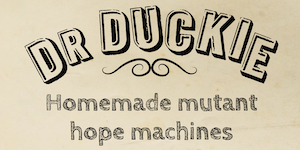
Hannah Quinlan & Rosie Hastings, The Scarcity of Liberty #2, 2016. Courtesy the artists and Arcadia Missa
Posted by Ben Walters, 3 April 2019, 12:32pm.
The many uses, abuses and (mis)understandings of queer space have been an abiding preoccupation of this blog so I was intrigued to see Queer Spaces: London, 1980s – Today, the new exhibition at Whitechapel Gallery. Packed into one of the gallery’s upstairs rooms, it’s a small show that contains multitudes and offers considerable value across several dimensions. Evolving from research by UCL Urban Laboratory’s Ben Campkin and Lo Marshall, it dynamically draws upon archives, activism, academia and art to provoke a range of thoughts, feelings and conversations about what queer space might be, to whom, under what circumstances.
It does so predominantly by collecting materials relating to 10 such spaces past and present – an “unapologetically incomplete” selection whose very partiality hints at uncharted constellations of lived worlds that remain largely invisible to mainstream society and indeed to other queers of different times and sensibilities given the precarious backdrop of the marketised city. (Full disclosure: I provided some materials for the exhibition.)
Vitrines around the space contain printed material and archival objects about the London Lesbian and Gay Centre and the Black Lesbian and Gay Centre, First Out café, the Women’s Anarchist Nuisance Café (WANC) and six licensed nightlife venues: the Black Cap, Central Station, the City of Quebec, the Glass Bar, the Joiners Arms and the Royal Vauxhall Tavern. The wealth of information within the vitrines encompasses architectural plans, manifestos, photos, media coverage and cartoons, campaign literature and paraphernalia, flyers, letters and emails.
There’s personal testimony about WANC’s philosophy, a book of condolences from First Out’s closure, neon-hued RVT Future campaign badges and a letter from Central Station inviting the Queen Mother to come and see Dockyard Doris perform – complete with a polite refusal from a double-barrelled lady-in-waiting on Clarence House headed paper. The richly utopian and conflicted histories of the two Lesbian and Gay Centres could support an exhibition all of their own.
This material is supported by oral-history recordings, video documentaries and an interactive map of London venues, and the vitrines are flanked by objects that straddle art and archive. As you enter the room, you’re faced with the large rainbow flag from the facade of the Joiners Arms, its muted colours evoking that venue’s limbo status (the old pub has closed, a new one is expected as part of the site’s redevelopment).
A handful of artists’ works show how these spaces are bound up with queer cultural use and aesthetic response, with predominantly celebratory and documentary impulses tempered by criticality. Evan Ifekoya’s collage and soundscape animate information from the Rukus! Black LGBT cultural archive and elsewhere, while Ralph Dunn’s photos of a Lewisham public toilet frame cottaging through an almost formalist eye. Meanwhile Prem Sahib’s pierced plaster relief cheekily enlivens the faux-classicism of a Chariots sauna and Tom Burr offers understated juxtapositions of hard physical materials with fluid queer use. Hannah Quinlan and Rosie Hastings’s huge, cacophonous corkboard collage, meanwhile, identifies the predominance of muscled white male bodies in dominant gay visual cultures while also noting various forms of community support.
In his introduction to the press view, UCL’s Ben Campkin noted “the spaces within the space” of each featured site, referring to their use by multiple publics and expansion through multiple technologies old and new. This exhibition itself offers a trove of spaces within spaces, asking more questions than it answers and vitally gesturing at the capacious complexities of queer living in the material world. Given that it’s free and on for four months, it’s easy to imagine becoming a regular.

